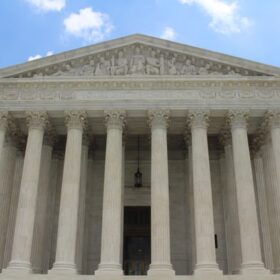Attorneys and in-house counsel who provide both legal and business advice to their clients should consider the scope of the attorney-client privilege relating to dual-purpose communications. On January 23, 2023, after initially granting certiorari and hearing oral arguments, the Supreme Court issued a one-line order dismissing In re Grand Jury—a case involving the application of the attorney-client privilege to dual-purpose communications—on the ground that certiorari had been improvidently granted.[1] In light of the Court’s order, there remains a three-way circuit split regarding the proper application of the attorney-client privilege to dual-purpose communications that involve both legal and nonlegal matters.
BACKGROUND:
In today’s increasingly regulatory landscape, clients routinely seek advice from their attorneys with multiple goals in mind. In turn, attorneys may respond in a way in which both legal and non-legal advice is intertwined. It is in this instance that the line between legal and non-legal communications becomes blurred and the application of the attorney-client privilege unpredictable.
In re Grand Jury involved a dispute over documents that included both legal and tax advice.[2] In that case, petitioner-law firm was served with a federal criminal grand jury subpoena for documents relating to the firm’s tax advice to a client that was the target of the investigation.[3] While producing some documents, the law firm withheld others on the grounds that those documents were protected under, inter alia, the attorney-client privilege because the documents involved both legal and non-legal tax advice.[4] The Ninth Circuit disagreed with the firm’s assertion of privilege. Rooting its decision in federal common law, the Ninth Circuit employed the “primary purpose test,” holding that the dual-purpose communications at issue were not privileged because the primary purpose of the communications was to obtain business rather than legal advice, and as such, did not fall within the attorney-client privilege.[5]
The law firm thereafter petitioned for and obtained certiorari at the Supreme Court. However, since the Supreme Court determined that certiorari had been improperly granted, there currently remains a three-way circuit split on the proper standard for applying the attorney-client privilege to dual purpose communications: (1) the primary purpose test; (2) a primary purpose test; and (3) per se privilege test.
THE DIFFERENT TESTS:
(1) The Primary Purpose Test
Under the primary purpose test, courts will apply the attorney-client privilege to dual-purpose communications so long as the primary purpose of the communication was to render legal advice as opposed to business-related advice.[6] Essentially, the court must engage in a balancing test to compare and ascertain the legal and non-legal purpose of the communications and then determine which purpose predominates. The privilege will apply only if it is found that the legal purpose behind the communication outweighs the non-legal purpose. The central and narrow reasoning behind this test is that a dual-purpose communication can only have one single “primary” purpose.[7] This test is recognized in the Second, Fifth, and Ninth Circuits.
(2) A Primary Purpose Test
Under a primary purpose test, the attorney-client privilege will protect dual-purpose communications so long as a significant purpose of the communication was for obtaining or providing legal advice, regardless of the level of significance of any other purpose of the communication.[8] Unlike the primary purpose test mentioned above, a primary purpose test is more broader and requires no balancing; rather, there simply needs to be a significant purpose in obtaining legal advice for the privilege to apply.[9] This test was first endorsed and has since been recognized in the D.C. Circuit.
(3) Per Se Privilege
In at least the tax context, the Seventh Circuit holds that dual-purpose communications are never privileged, no matter how significant the legal purpose.[10] Unlike the primary purpose and a primary purpose test articulated above, under the Seventh Circuit’s jurisprudence, there is no balancing of purposes and no analysis to determine what the significant legal purpose was to motivate the communication.
NOW WHAT?
Given that the Supreme Court has declined to address the underlying issue of applying the attorney-client privilege to dual-purpose communications, attorneys and in-house counsel should consider advising clients of the different privilege standards before entering into full and frank discussions. To the extent that parties have or may enter into non-legal business discussions, such parties should attempt to separate legal from non-legal advice to avoid any type of privilege confusion. As it stands, the Supreme Court has maintained the status quo and has left it up to the lowers courts to determine the most appropriate standard in applying the attorney-client privilege to dual purpose communications.
[1] No. 21-1397.
[2] 23 F.4th 1088, 1089 (9th Cir. 2021).
[3]See id.
[4] Id. at 1090.
[5] Id. at 1093-94.
[6] Id. at 1089.
[7] Id. at 1091.
[8] In re Kellog Brown & Root, Inc., 756 F.3d 754 (D.C. Cir. 2014) (emphasis added).
[9] Id. at 759-60.
[10] United States v. Frederick, 182 F.3d 496, 501 (7th Cir. 1999).


